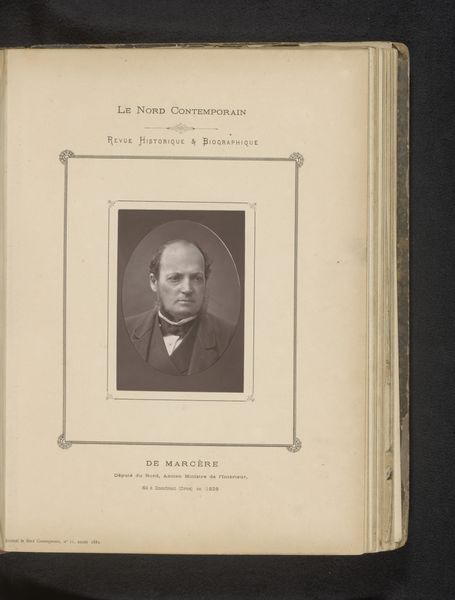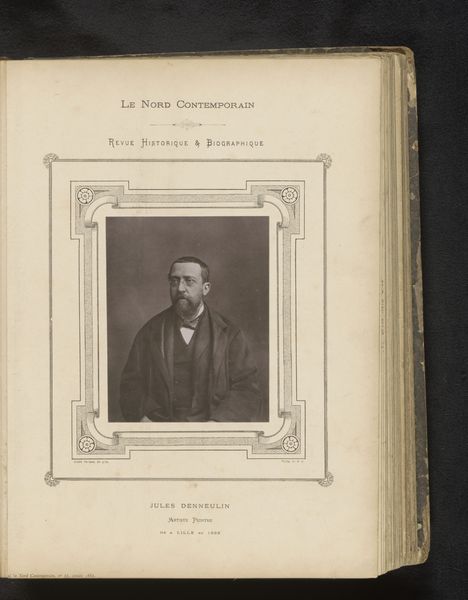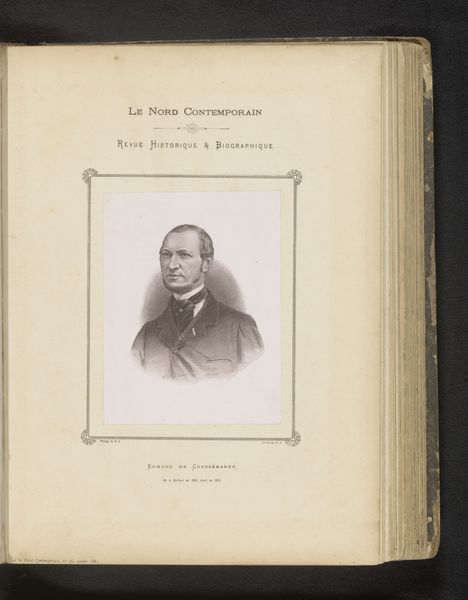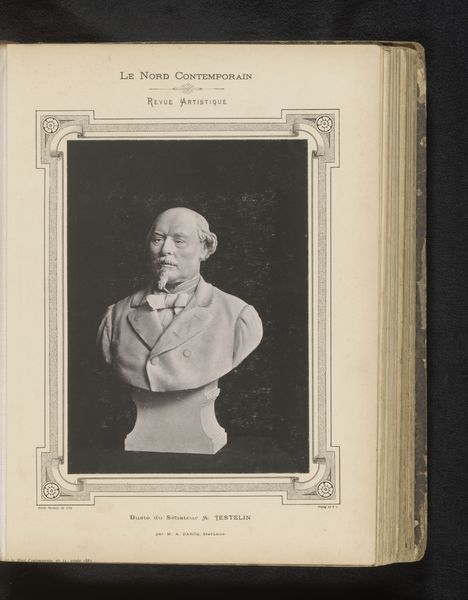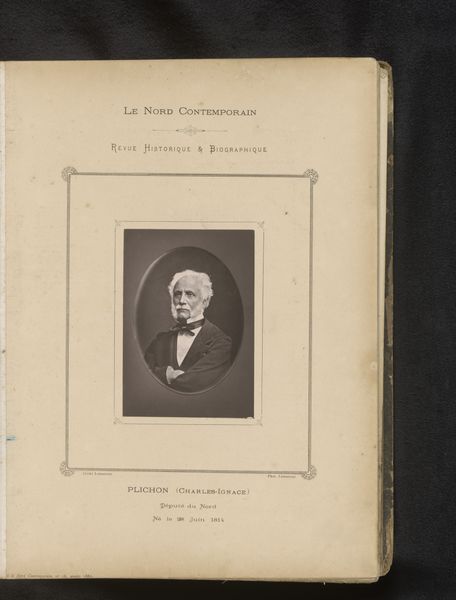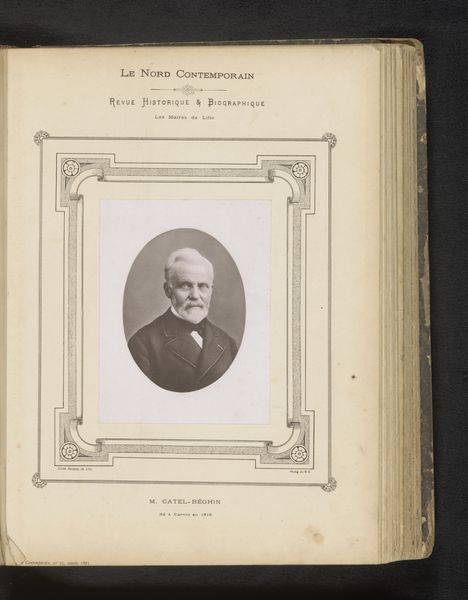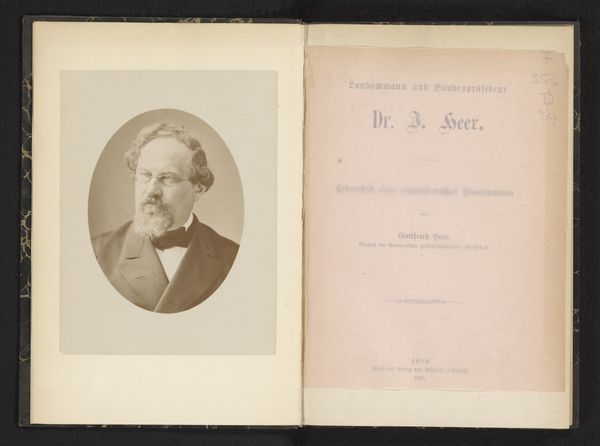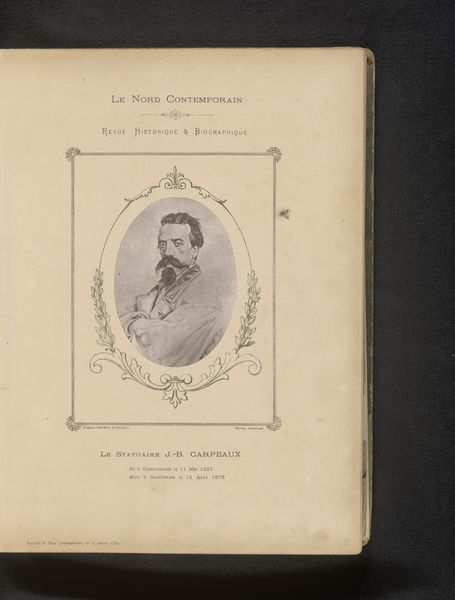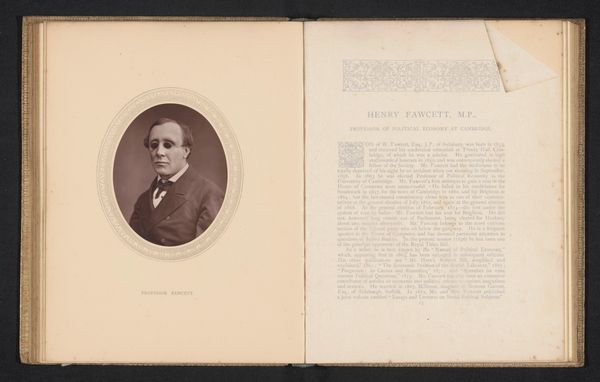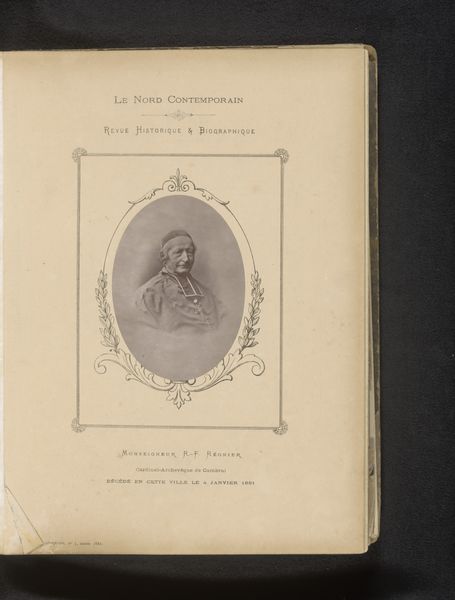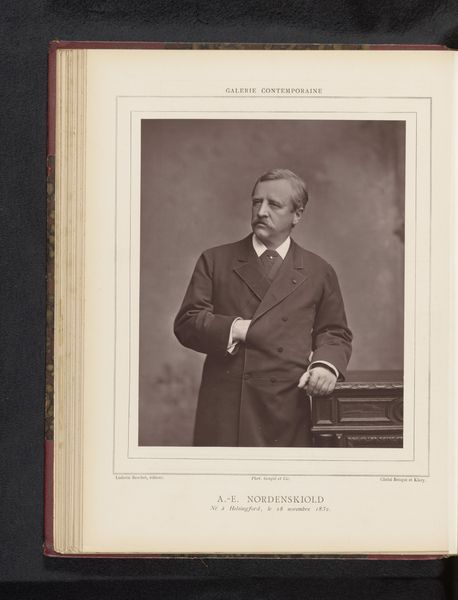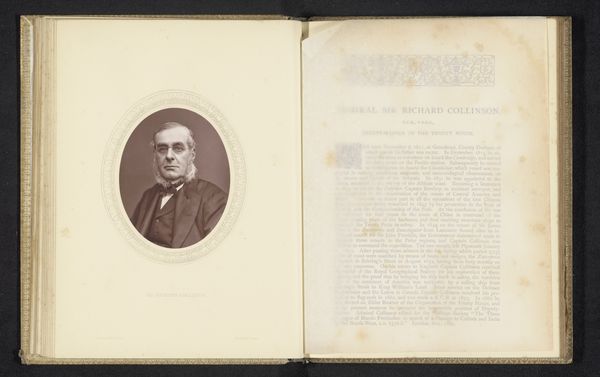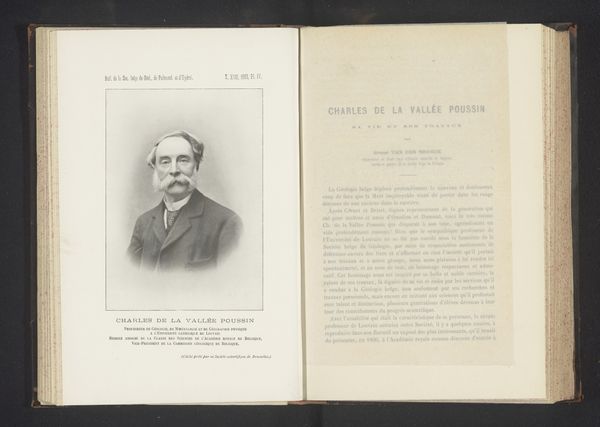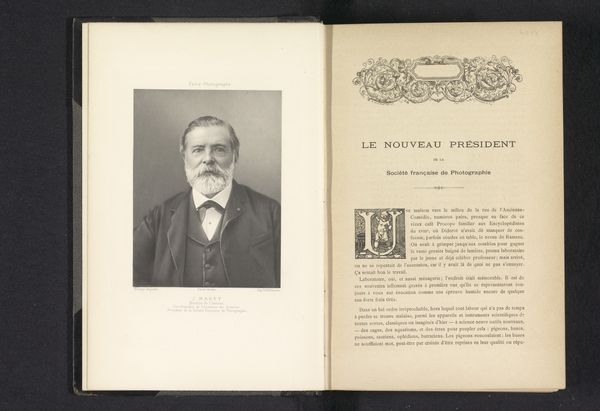
print, photography, collotype, typography
#
portrait
# print
#
photography
#
collotype
#
typography
#
genre-painting
#
modernism
Dimensions: height 155 mm, width 120 mm
Copyright: Rijks Museum: Open Domain
Editor: Here we have a collotype print, made before 1882, of a portrait of Charles Crespel-Tilloy, who was mayor of Lille. I’m struck by how formal and almost austere it seems, the way he's framed within this book page. What kind of historical context can we apply here? Curator: Indeed. This image appears to be a page from "Le Nord Contemporain," a revue that showcased prominent figures of the time. Its context isn't just artistic but deeply entwined with the socio-political landscape. What does it mean to be included in a publication like this, and who decided who was worthy? How might Crespel-Tilloy himself have used this portrait to project power and authority? Editor: So it’s not just a portrait, it’s a statement about status and inclusion, being part of the recognized elite in Lille. But how did photographic prints function within the broader visual culture? Was it like social media for the 19th century? Curator: That's a great analogy. These collotypes, which combined photography and typography, were reproducible images circulated widely. Consider how this format democratized portraiture but also codified hierarchies, dictating who was visible and how they were presented. Editor: The 'democratization' feels a bit loaded then. I’m now considering how carefully crafted these public images must have been. Was there any room for artistic experimentation in representing figures like Crespel-Tilloy? Curator: To some extent, yes, especially in photography's early stages. However, for official portraits like this one, conventions dictated a certain level of formality and idealization. The aim was not necessarily to capture a person's individual essence, but to create a representation of civic virtue. Editor: This makes me think differently about how we see historical figures through photography – it’s less a transparent window, more of a constructed narrative. Curator: Exactly! Reflecting on the relationship between the individual and the collective, the private and the public, reveals photography's powerful role in shaping historical memory.
Comments
No comments
Be the first to comment and join the conversation on the ultimate creative platform.
